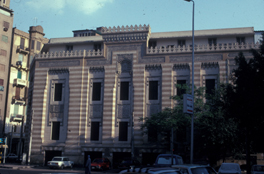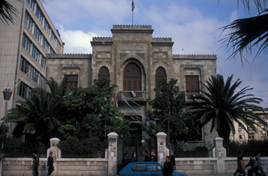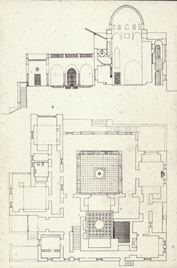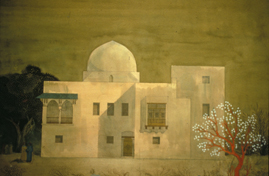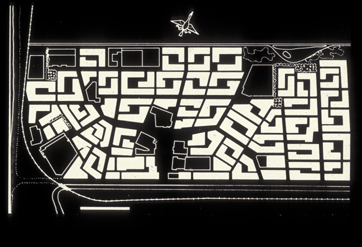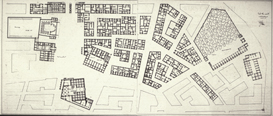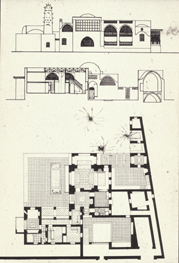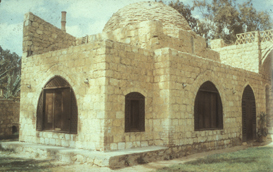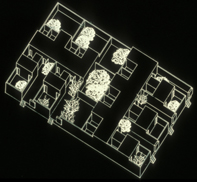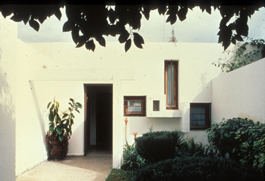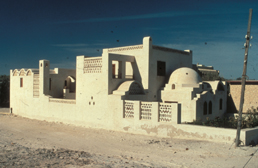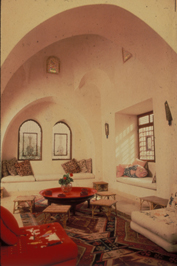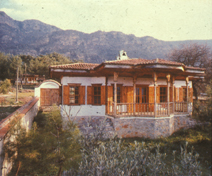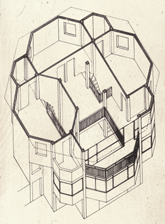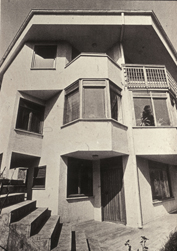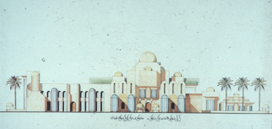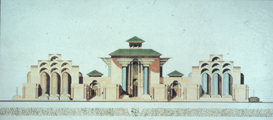AGA KHAN PROGRAM FOR ISLAMIC ARCHITECTURE
Course 4.611/4.613:
19- Revivalism and Twentieth-Century Architecture: (Click on images to enlarge)
In the Islamic world today, the issue of revivalism is one of the most debated themes in the cultural discourse in general, and the architectural one in particular. No clear definition of the term exists, but for our inquiry the Aga Khan Award definition would constitute a starting point. According to their 1989 final report’s introduction, revivalism is a “fully thought-out recasting of forms created and used in the past or in vernacular traditions.”
Revivalist Examples:
The Ministry of Awqaf: Mahmud and Mustafa Fahmi, Cairo, a clear neo-Mamluk building built in three stages in 1898, 1911, and 1929.
Ministry of Awqaf, facade |
The Fijeh Headquarter Building: ‘Abd al-Razzaq Malas, Damascus, an eclectic, Neo-Islamic building for the water company, (1937-42).
The Fijeh building, Damascus, facade |
The Different Modern Approaches to the Vernacular:
Hasan Fathy: The visionary Egyptian architect and pioneering advocate of revivalism. His buildings adapt selected vernacular examples as the embodiment of an authentic Egyptian architecture, albeit of an unlikely mix of Mamluk Cairene and Nubian styles, and recast them through subjective and lyrical interpretations of traditions.
Hamdi Seif al-Nasr Rest house, Fayyum (1944).
Hamdi Seif al-Nasr Resthouse, plan and section |
= Gouache rendering of Hamdi Seif al-Nasr Resthouse |
The Village of New Gourna, Opposite Luxor, Upper Egypt (1945-1948).
New Gourna, Mass plan of the village |
New Gourna, detailed plan of the village center |
Riad House, Saqqara Road, Giza, Egypt (1967).
Riad House, plan, section and elevation |
Riad House, exterior view of the main qa'a |
Jean-François Zevago: A Rationalist modernist who used the courtyard house as a paradigm for comfortable low-cost housing
Courtyard Houses, Agadir, Morocco (1964).
Axonometric of a cluster of courtyard houses, Agadir |
Interior view of the courtyard, Agadir |
‘Abd al-Wahid al-Wakil: A disciple of Fathy, who freely blends together forms, and even fragments of forms, to create plastic, sculpture-like structures.
The Halawa House, Agami, Egypt (1975).
Halawa House, Agami, general view |
Halawa House, Agami, interior view of the main qa'a |
Nail Cakirhan: A poet and journalist turned master builder and revivalist. He built summer houses in his native town, Mugla, following traditional “Turkish” house types.Inkaya House, Akyala Village, Mugla (1975).
Mugla Inkaya House, exterior view |
Ahmet Gülgönen: A Turkish architect whose approach to vernacular architecture could be termed conceptual and contextual.
Gülgönen House, Istanbul (1981).
Gülgönen House, axonometric drawing |
Gülgönen House, main facade |
Basil al-Bayati: The Iraqi master formalist, his projects combine elements adopted from historical styles with an over-all romanticized conception of Islamic architecture.
A project for a Museum of Islamic Architecture (1983).
A project for a hammam (public bathhouse) (1983).
Project of a Museum for Islamic Architecture, facade |
Project of a hammam, facade |
